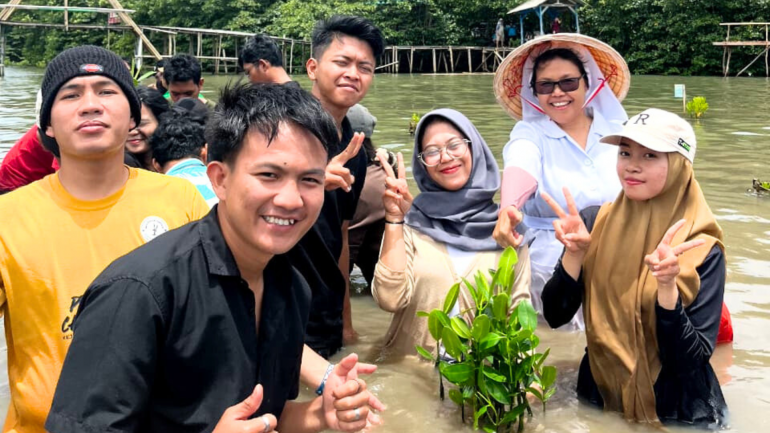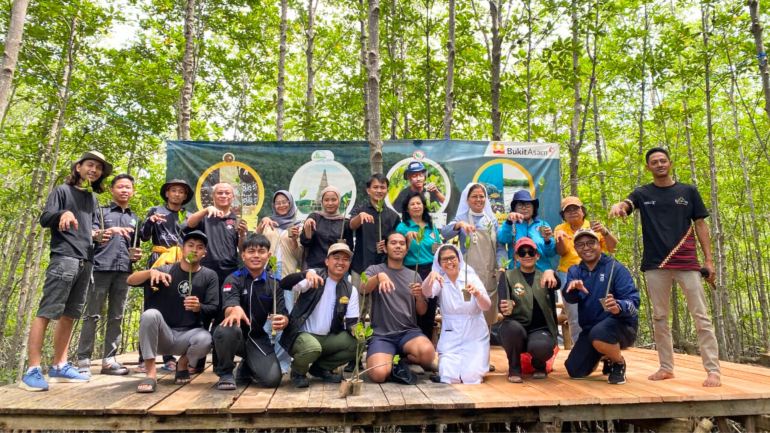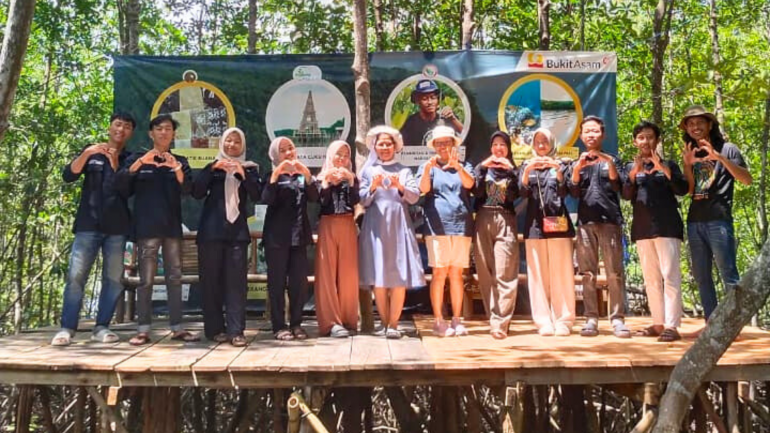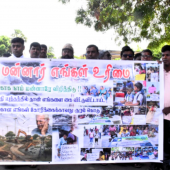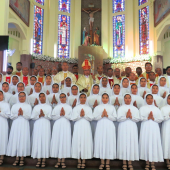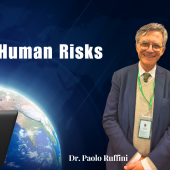A Catholic Nun-Led Movement Plants Mangroves and Hope in an Indonesian Coastal Village
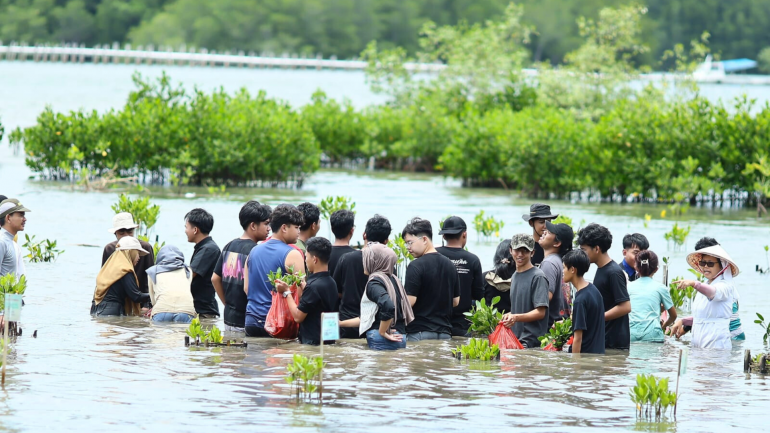
On a quiet morning after Indonesia’s Independence Day celebration, August 18, 2025, Sr. Vincentia, HK, decided to go for a long walk. She did not know that this simple act would lead her to a bigger initiative, planting thousands of mangrove trees along the coast of Sidodadi Village, Pesawaran Regency, Lampung Province, Sumatra Island.
“Rather than doing nothing, I thought I’d take a walk,” said the sister from the Congregation of the Sisters of the Sacred Heart (HK).
However, she could only manage to walk about 10 kilometres before getting a lift from an acquaintance. They began to talk, and before they knew it, they had arrived in the coastal village of Sidodadi, a journey that would change much.
There, she met the people of Sidodadi, fisherfolk who struggle daily against sea abrasion and tidal flooding. “Some of their houses get hit by seawater two to three times a day,” she told Radio Veritas Asia (RVA).
Seeing this reality moved her heart. As the animator of the Laudato Si’ Movement Indonesia (Education Sector), Sr. Vincentia began to ask herself: What can I do for them?
From Unease to Movement
Over the past few years, Sidodadi Village has become known as one of Lampung’s centres for mangrove cultivation and planting. This awareness grew out of deep concern, the sea becoming more violent, the land shrinking, and the marine ecosystem slowly disappearing.
“Now it’s hard to catch even two crabs,” said Sr. Vincentia. “Back then, fishers could bring home dozens.”
Amid this scarcity, a local fisherman named Pak Aan began cultivating mangrove seedlings on his own initiative. He invited other villagers to join, and the small movement gradually sparked new hope for Sidodadi.
Momentum and Collaboration
When the Diocese of Tanjungkarang announced its pastoral theme for the year, Love for Life and the Environment, Sr. Vincentia saw the perfect moment to expand the movement.
She initiated an event titled “Cross-Sector Mangrove Planting toward Integral Ecology”, organized together with the Laudato Si’ Movement Indonesia, Lampung Chapter.
Through friendship networks and online communication, her call spread rapidly. Within a week, support poured in from various groups, Catholic communities, environmental activists, and even Muslim students from Raden Intan State Islamic University (UIN) Lampung.
“They didn’t just show up, they chipped in to buy mangrove seedlings,” said Sr. Vincentia. “That meant a lot to me.”
A total of 1,000 seedlings were collected for the first planting phase on October 25, 2025. The second phase is planned for March 2026, and the third for July 2026, coinciding with International Mangrove Day. The total target: 5,000 mangrove trees.
Planting, Not Just Watching
Support exceeded expectations. More than 150 people wanted to join, but the site could only accommodate 75 participants. “We had to limit the number because the planting platform couldn’t hold too much weight,” explained Pak Aan.
The rule was clear: everyone had to get into the water.
“If you only want to take photos, better not join. Everyone must be ready to get muddy and plant,” the nun said firmly.
On the day of the event, the sea bore witness. Seventy-five participants from various communities, including WKRI, Xaverius students, GusDurian, JPIC FSGM Sisters, and PMII and UINRIL students, waded into the muddy water to plant 1,000 mangrove seedlings, 300 meters from the shoreline.
Sr. Vincentia was not alone. Three fellow Sisters of the Sacred Heart—Sr. Meriam HK, Sr. Sofie HK, and Sr. Yolanda HK joined her in the effort.
Growing with Hope
Through this experience, participants learned firsthand how tough life is for Sidodadi’s fishers. The sea that once sustained them now often brings disaster. “They used to easily catch fish, crabs, even clams,” said Sr. Vincentia. “Now, the catch is getting scarcer.”
Yet from the mud and saltwater, new hope is growing. Alongside villagers like Pak Aan, the volunteers learned mangrove seedling techniques using the gulutan method, planting about 20 seedlings in mud beds so they don’t drift away. Of every 20 seedlings, usually 15 to 18 survive and grow well.
“Every sprouting shoot is a sign of hope,” said Sr. Vincentia. “It shows that nature can be healed if humans are willing to take part.”
More Than Just Planting Trees
The mangrove-planting movement in Sidodadi is more than an environmental activity. It has become a symbol of interfaith and intergenerational solidarity. On a once quiet coastline, a new spirit is rising: saving the earth also means saving lives.
“This isn’t about how many trees we plant,” Sr. Vincentia concluded. “It’s about how deeply we love the earth we stand on.”
Radio Veritas Asia (RVA), a media platform of the Catholic Church, aims to share Christ. RVA started in 1969 as a continental Catholic radio station to serve Asian countries in their respective local language, thus earning the tag “the Voice of Asian Christianity.” Responding to the emerging context, RVA embraced media platforms to connect with the global Asian audience via its 21 language websites and various social media platforms.





